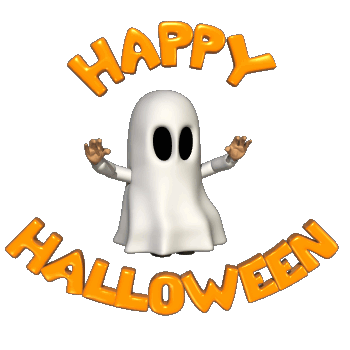 October 31 is celebrated as Halloween in many countries of the world. It is believed to have its roots in pagan festivals, especially the Celtic Samhain. During Samhain, people wore scary costumes and lit bonfires to scare away evil spirits. In the 8th century, November 1, declared as All Saints’ Day, included customs similar to those of Samhain. The day before All Saints’ Day was known as the All Hallows’ Evening; later got abbreviated to Halloween! Soon Halloween evolved into a secular festival celebrated by all. Halloween is synonymous with customs like ‘trick or treat’, dressing up in weird, scary costumes, carving pumpkins into lanterns, apple bobbing, lighting bonfires, telling ghost or scary stories and watching horror movies etc.
October 31 is celebrated as Halloween in many countries of the world. It is believed to have its roots in pagan festivals, especially the Celtic Samhain. During Samhain, people wore scary costumes and lit bonfires to scare away evil spirits. In the 8th century, November 1, declared as All Saints’ Day, included customs similar to those of Samhain. The day before All Saints’ Day was known as the All Hallows’ Evening; later got abbreviated to Halloween! Soon Halloween evolved into a secular festival celebrated by all. Halloween is synonymous with customs like ‘trick or treat’, dressing up in weird, scary costumes, carving pumpkins into lanterns, apple bobbing, lighting bonfires, telling ghost or scary stories and watching horror movies etc.
Some interesting Halloween facts:
- It is believed that Halloween was introduced to America by Irish immigrants who had to leave their country during the potato famine.
- ‘Trick or Treat’ is thought to have its origins in ‘souling’ a European custom where poor people begged for ‘soul cakes’ from houses in return for saying prayers for their dead. Today it means ‘give a treat or a prank will be played on you’ by the children who come to your door.
- Pumpkins carved into jack o’ lanterns originated from the Celtic custom of carving faces from turnips, keeping candles in them and using them as lanterns or window-lamps to scare away ghostly spirits.
- It was believed that spirits came back to earth on November 1, trying to find bodies to possess so that they could get salvation. So villagers dressed up in fearsome costumes and made scary noises to keep the spirits away from them.
- Growing big pumpkins is a rage during Halloween with people vying for prize money as high as $25,000.
- A pumpkin is 90 per cent water; it is a great source of Vitamin A with just half cup of pumpkin providing 3 times more than the daily required amount!
- The world record for fastest pumpkin carving is held by Stephen Clarke with time taken being 24.03 seconds!
- Pumpkins are not only orange in colour; they can also be white, blue or green.
- Black and orange are the colours associated with Halloween; black symbolises death and orange fall harvest.
- The largest Halloween Parade in the USA is the Village Halloween Parade attracting 50,000 participants and more than 2 million onlookers.
- Apple bobbing originated in the Roman harvest festival in honour of Pamona, the goddess of fruit trees.
- Spotting a spider on Halloween means the spirit of a loved one is watching over you.
- After Christmas, Halloween is the most commercially successful holiday.
- Samhainophobia is a morbid fear of Halloween.
- Owls are an integral part of Halloween. They symbolise witches. In Medieval Europe, it was believed that hearing an owl’s call meant someone was about to die.
- Ireland is believed to be the birthplace of Halloween.
- Halloween is also known as All Hallows’ Night, Witches Night, Snap-Apple Night, Samhaim and the End of summer.
- Black cats are considered witches’ subordinates and bad luck; in England white cats are considered bad luck.
- There is no word rhyming with ‘orange’, the colour of pumpkins!
